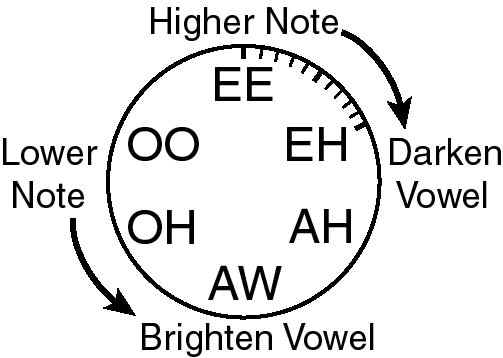We hear about them quite a bit. We use them in every day speech. Webster's dictionary defines it this way: diph-thong (dif'-thong, dip'-thong), n. sound containing two vowels.
Diphthongs are very important to barbershop singing for a number of reasons. Diphthongs help the listener to more clearly recognize and understand the words we are singing. From a technical stand point, diphthongs when used properly help us keep synchronized with each other while singing. But most importantly, diphthongs allow us to spend more time on the all important target vowel - the sound that really makes a chord ring!
The Barbershop Harmony Society currently recommends the use of 12 vowel sounds (target vowel sounds). Technically, two of these are diphthongs, they are indicated by an asterisk.
| Vowel Sound | Example |
| "ee" | as in we |
| "ih" | as in sit |
| "aye"* | as in late |
| "eh" | as in let |
| "ae" | as in cat |
| "ah" | as in calm |
| "aw" | as in law |
| "oh"* | as in rose |
| "oo" | as in look |
| "oo" | as in moon |
| "ur" | as in learn |
| "uh" | as in love |
Vowel Migration and Modification
 |
Click for larger image. |
Think about this relationship as you sing the familiar warm-up exercise "mee, meh, mah, maw, moh, moo."